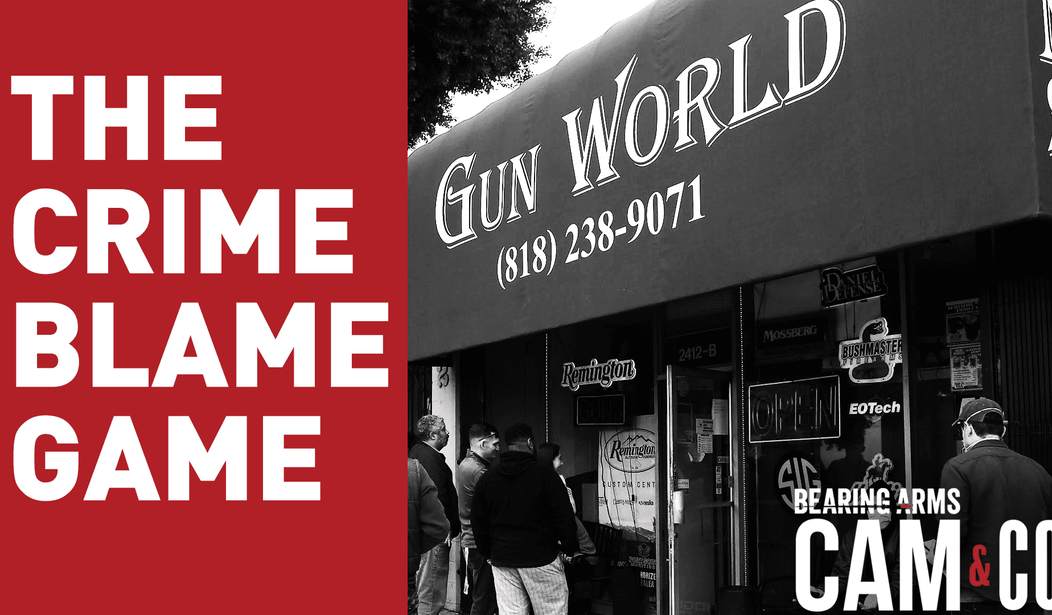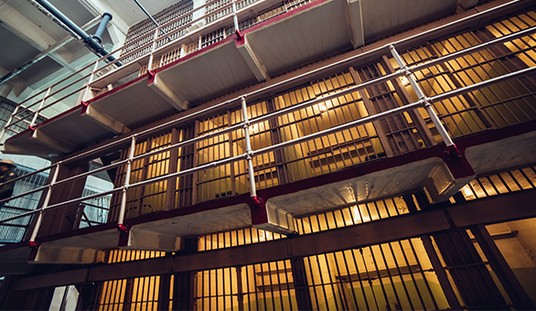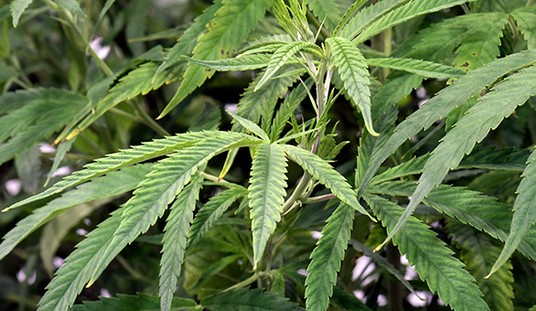Gun control activists are pointing their fingers at the surge in gun sales, claiming that the arming of law-abiding Americans is driving the increase in shootings and homicides in many American cities. Using statistics as well as first-hand accounts from senior law enforcement officials, on today’s Bearing Arms’ Cam & Co. we break down what’s really responsible for the rise in violence.
Let’s start with the fact that the rise in crime is real, but it’s also not happening in every city across the country. New York City’s homicide and non-fatal shooting rates in 2020 are going to be the worst in decades, with shootings still up more than 100% last month compared to November of 2019, but it’s hard to blame that on a rise in gun sales in New York City. In fact, police officials there say that 40% of those arrested in shootings this year have a previous gun arrest, so we’re not seeing a huge influx of crime among those who’ve managed to acquire a New York City pistol license. Like most other cities, it’s gang and drug-fueled violence that’s creating the spike.
Another bit of evidence that more legally-owned guns doesn’t lead to more violent crime. In Pierce County, Washington, gun sales are more than double what they were in 2019, yet the number of firearm-related deaths is slightly down from last year. That’s actually the case in many law enforcement jurisdictions, according to the Police Executive Research Forum, which recently surveyed more than 200 departments of all sizes and found that just a little more than half had reported an increase in homicides.
The 223 agencies in PERF’s analysis reported a total of 7,158 homicides from January through September of 2020. That represents an increase of 28% over the 5,583 homicides those agencies reported during the first nine months of 2019.
Overall, 58% of the agencies reported increases in homicides during the first nine months of 2020, 20% reported decreases, and 22% (mostly small and medium-sized agencies) reported no change.
Homicide increases were especially pronounced among the largest cities. Fifty-six of the 67 major cities recorded a rise in homicides between 2019 and 2020. Only 10 of these agencies reported a decrease, and in one agency there was no change.
Homicides are up sharply in many cities located in states with restrictive gun control laws. It’s not just New York City, where homicides are up 38% compared to 2019. There’s been a 58% increase in homicides in Prince George’s County, Maryland; a 52% increase in Boston, 51% increase in Chicago, and a 22% increase in Los Angeles.
Meanwhile, Oklahoma City, located in a state with Constitutional carry laws on the books, has seen its homicide rate decline by 21%. In El Paso, Texas, homicides are down 66% compared to 2019, and no one’s going to confuse the gun control laws in Texas and California anytime soon.
It’s pretty clear that the increase in crime isn’t happening because more people are legally buying guns. In interviews with senior police officials in a number of cities, the Police Executive Research Forum found several important commonalities that are having a negative impact on the crime rate; less policing and emboldened criminals.
Here’s Houston PD Assistant Chief Heather Morris:
A big thing we’re seeing right now is the number of people on bond or parole committing homicide. We had 28 suspects last year who were on bond or parole when they committed a murder, and this year we’ve had 44. The person who killed one of our officers a week ago was out on $100 bond for unlawfully possessing a weapon. We always have people out on bond or parole who commit crimes, but the number is higher this year. Bond reform in some cases is needed, but you have people who allegedly committed violent crimes getting out on bond when they haven’t in the past.
Louisville Metro Police Assistant Chief Andy McClinton:
Our self-initiated activity, traffic stops, and field interrogations have plummeted. I think that’s another reason we’re seeing the high number of rounds fired. If our self-initiated activity is low and people know that there’s a fairly good chance they’re not going to get stopped, they ride around in vehicles armed.
Minneapolis Police Commander Charlie Adams:
We’re down 200 officers. After the riot situation when the Third Precinct was burned down, we had a bunch of officers go out with PTSD or just retire. Now we have to supplement the street patrols with some of our specialized units. We had a Violent Criminal Apprehension Team, which went out and got our bad guys so that investigators could work their cases. We had to put them back into the Patrol Division.
Los Angeles Police Captain Paul Vernon:
When the protests hit at the end of May, that’s when the violent crime went out of control. I see three reasons for that. Police were distracted by all the protests. There was also the political rhetoric about the police that emboldened the criminals. And the defunding of the police takes resources away, particularly from the specialized units that go after the violent criminals.
Omaha Police Captain Steve Cerveny:
Our patrols, officer-initiated activity, and traffic stops are way down. That has a tremendous impact as well. We have an active gang unit that does a fantastic job, and they are out there making stops, contacts, and seizing a lot of firearms. But we’re having a lot less of our uniformed patrol willing to make stops, for a variety of reasons. The lack of traffic stops has impacted our numbers and caused some of those increases.
Arrests are down, but even when they take place many suspects are turned right back onto the streets because of COVID restrictions on jail capacity. Court systems are regularly closed when staffers test positive for the coronavirus, and the criminal justice system, never particularly speedy in normal circumstances, has sometimes ground to a complete halt in many cities over the past nine months.
The decline in proactive policing, combined with the increase in no-bond cases and the slowdown in the court system, are emboldening violent criminals who increasingly believe that they can literally get away with murder. That’s what’s really driving the increase in crime, and as crime goes up people become more afraid and less willing to cooperate with police because of their fear of retaliation. That further emboldens criminals and makes it more difficult to make arrests, and a vicious cycle ensues.
If we want to bring these numbers down, we need to focus on the individuals who are actually committing the crimes, but sadly far too many Democrats at the local, state, and federal level still believe that we can ban our way to safety, and that the best way to have less crime is to make sure that there are fewer guns (and fewer legal gun owners) across the United States.









Join the conversation as a VIP Member